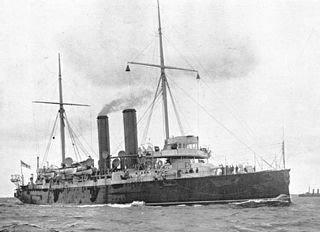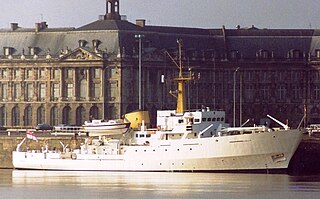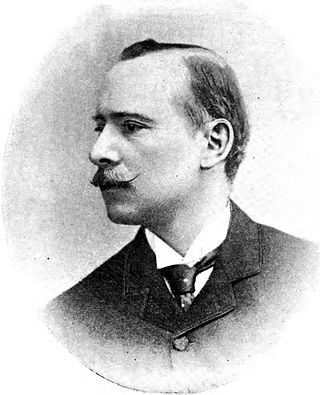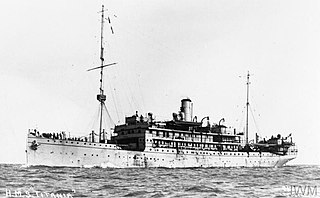
HMS Hydra was a Royal Navy deep ocean hydrographic survey vessel, the third of the original three of the Hecla class. The ship was laid down as yard number 2258 on 14 May 1964 at Yarrow Shipbuilders, at Scotstoun on the River Clyde and launched on 14 July 1965 by Mary Lythall, wife of the then Chief Scientist, Basil W Lythall CB (1919–2001). She was completed and first commissioned on 4 May 1966 and, as the replacement for the survey ship HMS Owen, her commanding officer and many of her ship's company formed the first commission of HMS Hydra. She was decommissioned and sold to the Indonesian Navy in 1986 and renamed KRI Dewa Kembar ; she was still in service in 2019.
Maurice Walter Griffiths was a noted yachtsman, boat designer and writer on sailing subjects. In his writing of some 19 books he focused on the creeks of the Thames Estuary and the English east coast. His books include The Magic of the Swatchways, The First of the Tide, Yachting on a Small Income, and Sixty Years a Yacht Designer. He was the editor of Yachting Monthly, the British sailing magazine, from 1927 until 1967.
HMS Powderham was one of 93 ships of the Ham class of inshore minesweepers named after villages ending in -ham, in this case Powderham in Devon. She was launched on 27 November 1958 by J. Samuel White & Company Ltd, Cowes and commissioned in 1959. She was allocated pennant number M 2720.
HMS Dampier was a survey ship of the Royal Navy, named after the explorer, author and privateer, William Dampier (1652–1715). Originally intended as a Bay-class anti-aircraft frigate, the ship was in commission from 1948 to 1968, spending her entire career based at Singapore, carrying out survey work.
HMS Waterwitch has been the name of several Royal Navy vessels:

HMS Edgar was a first class cruiser of the Royal Navy, and lead ship of the Edgar class. She was built at Devonport and launched on 24 November 1890. She served on the China Station, and in the First World War in the Gallipoli Campaign, along with her sisters Endymion, Grafton and Theseus.

HMS St George was a first class cruiser of the Edgar class. She was launched on 23 June 1892.

HMS Beagle was a Bulldog class coastal survey vessel of the Royal Navy and was the ninth to bear the name.

The sixth USS Niagara (SP-136), later PY-9, was a United States Navy patrol vessel in commission from 1918 to 1931 and which served during World War I.

Frank Linsly James FRGS was an English explorer. He was the son of American parents: Liverpool-based merchant Daniel James and Sophia Hall (Hitchcock) James.

HMS Sealark was a Royal Navy vessel used primarily for hydrographic survey work. She was originally a luxurious private auxiliary steam yacht for a number of wealthy owners and in 1903 was acquired by the Royal Navy, serving until 1914. She was sold to James Patrick Steamships Ltd and converted to a merchant ship for the Australian coast and finally hulked in 1924.

HMS Dart was a schooner of the Royal Navy, built by the Barrow Shipbuilding Company, Barrow and launched in 1877 as Cruiser for Lord Eglinton. She was subsequently purchased by the Colonial Office for the use of Sir Arthur Hamilton Gordon as governor of the Fiji Islands. On his appointment to New Zealand, Cruiser was purchased by the Royal Navy as a tender for the training ship Britannia and the name changed to Dart in March 1882.
Kowloon No.1 was a 2,942 GRT cargo ship that was built in 1943 as Empire Dirk by Ailsa Shipbuilding Co Ltd, Troon, Ayrshire, United Kingdom for the Ministry of War Transport (MoWT). Spending the war years in home waters, she was sold into merchant service in 1951 and renamed Nancy Moller, and then Mount Austin after a further sale later that year. In 1956, she was sold to the Australian Government and renamed Coolabah.
St Clare John Byrne (1831-1915) was a British naval architect, who specialized in the design of luxury yachts during the late Victorian and early Edwardian period.
HMS Vivid was an iron screw yacht purchased from civilian service in 1891, where she had been named SS Capercailzie. She became the Devonport base ship and flagship in 1893 and was also used as the yacht for the Commander-in-Chief, Plymouth and was sold in 1912, later being wrecked in 1913.

William Dodge James, was the son of a wealthy American merchant, who was raised and educated in England. He married Evelyn Elizabeth Forbes, daughter of the 4th Baronet of Newe, who became a celebrated society hostess of the period. James was a big game hunter and Edward, Prince of Wales, was one of the frequent visitors to their West Dean country estate in West Sussex.

Hydrographic Survey Bench Mark is a heritage-listed survey marker at Bessie Point, off Pine Creek-Yarrabah Road, East Trinity, Cairns Region, Queensland, Australia. It was designed by Royal Navy and built in 1878 by Royal Navy. It is also known as Bessie Point. It was added to the Queensland Heritage Register on 9 May 2014.

HMS Titania was a Royal Navy submarine depot ship. Most of those that saw service in the First World War were scrapped in the 1930s. Titania, however, saw service in the Second World War. She was scrapped at Faslane, Scotland, in September 1949.

RSS Panglima (P68) was the first ship of the Republic of Singapore Navy. The ship was commissioned in 1956 as HMS Panglima and was the third ship to be given the name. She was regarded as a milestone for the Malayan shipbuilding industry. During her Royal Navy service, the ship hosted distinguished guests such as South Vietnamese vice president Nguyễn Ngọc Thơ and Singapore's first native head of state the Yang di-Pertuan Negara Yusof bin Ishak. She also embarked on numerous goodwill visits to nearby ports and conducted naval training for new sailors.

Admiral Sir Frederick Charles Learmonth was a Royal Navy officer.


















